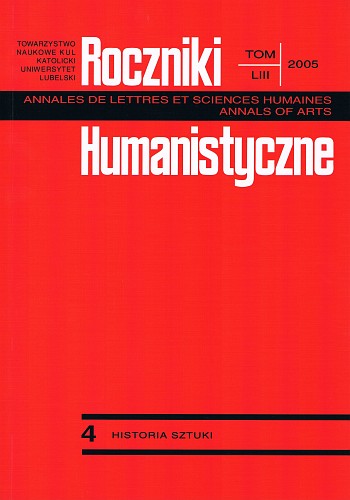Zamek lubelski w XVI i pierwszej połowie XVII wieku
The Lublin Castle in the 16th Century and in the First Half of the 17th Century
Author(s): Grażyna JakimińskaSubject(s): Fine Arts / Performing Arts, Architecture
Published by: Towarzystwo Naukowe KUL & Katolicki Uniwersytet Lubelski Jana Pawła II
Keywords: Lublin; castle; inventory of the monuments of the past
Summary/Abstract: The present buildings on the castle hill were erected mostly at the beginning of the 19th century. The 13th century donjon and the Trinity Chapel the building of which is associated with Casimirus the Great belong to the oldest ones, connected with the functions of the castellan’s town. The castle, built by Casimirus, and developed as a Renaissance residence in the times of Sigismund the Old and modernized in the subsequent centuries, has very few iconographie records. We can get some idea of what it looked like in the Piast times on the basis o f the preserved foundations that have only partially been excavated. We can make guesses about the distribution of buildings on the castle hill also basing on the mural that has recently been discovered on a wall in the Lubomelskis’ house in the Lublin Market Square. The Renaissance silhouette of the castle is shown in the co lo red copperplate from the 6th book of “Civitates orbis terrarum ” published in Cologne in 1618. More detailed information about the arrangement of the castle buildings, their connections and functions, and partly also about their furnishing comes from written sources. The main one is the inventory of the Lublin starosty including also the inventory of the castle from 1618. The successive changes of the function and re la tiv e ly small re constructions are described in the records of two inspections of the starosty of 1602 and 1616. Owing to these sources it is possible to learn about the look of the castle in the period of its splendor. From analysis of these sources it appears that foreigners and other visitors were impressed not only with the position of the castle but also with its buildings and furnishing. Since the wars of the middle of the 17th century completely destroyed the castle our image of its splendor is formed only on the basis of the sources.
Journal: Roczniki Humanistyczne
- Issue Year: 53/2005
- Issue No: 04
- Page Range: 241-254
- Page Count: 14
- Language: Polish

